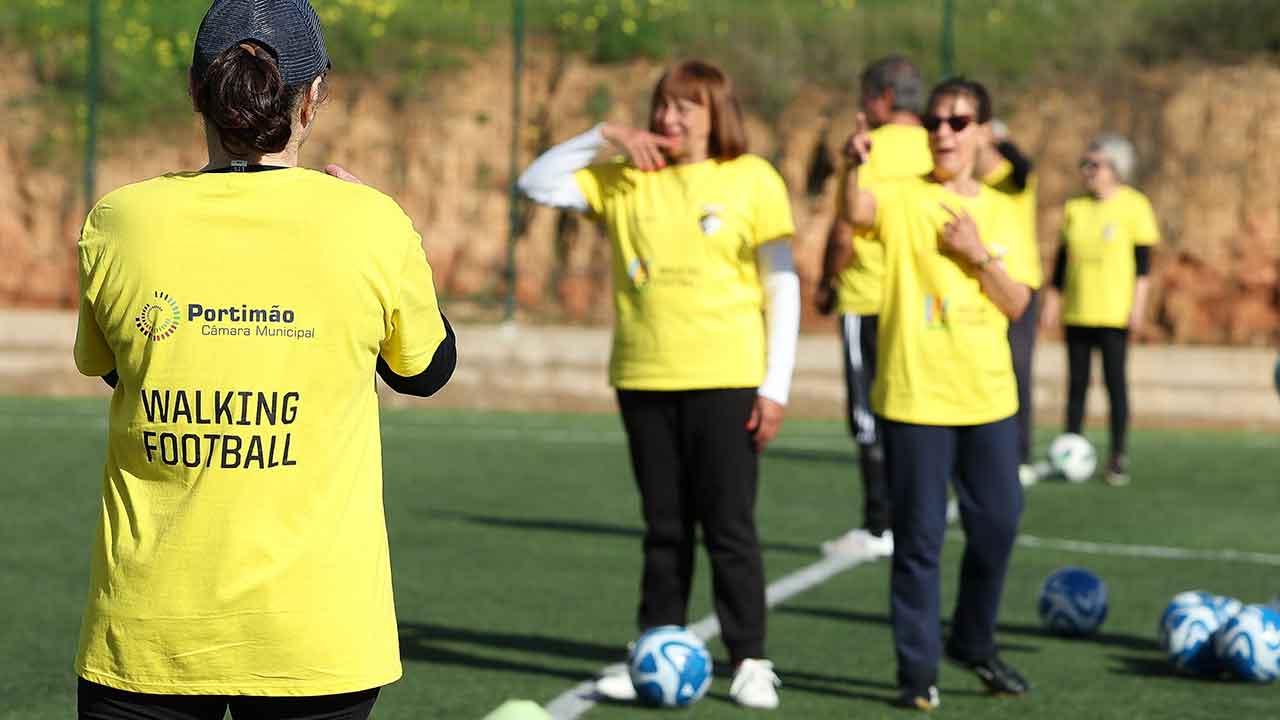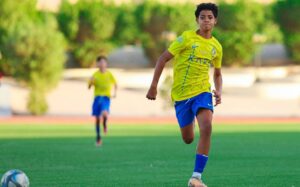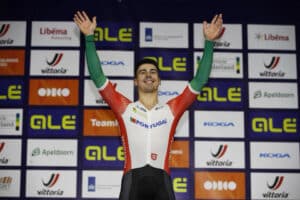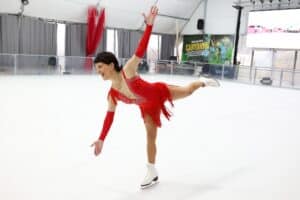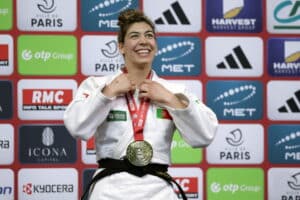Portimonense Football Club encourages people over 50 to play the new sport, fostering integration and camaraderie for a more active lifestyle.
Walking football has gained popularity in recent years as the average age of the Portuguese population rises. This variant of traditional football encourages people over 50 to practice sports. It also promotes integration and camaraderie for a more active lifestyle.
“As club vice-president, I had to take the first step to encourage others. This is more of a social gathering; it’s not about losing weight. It’s for people to move and break free from a sedentary lifestyle”, said Hélder Correia, walking football player and vice president of the Portimonense Club.
Lusa agency visited the grounds of the Algarve club’s training school, where the walking football team, consisting of three couples and five foreign athletes residing in the city, trains twice a week.
“This is our reality. We are all happy here; it’s a family, and we have [foreign] international players. We have two foreigners present here and one more who has just gone on holiday. We are already an international team, in the sense of the word”, he pointed out.
The Portimonense walking football team is the sole non-competitive team in the Algarve in this discipline. It comprises 21 registered federation athletes aged between 53 and 77, including nine females and 12 males.
The sport started in Europe in 2011 but only arrived in Portugal about four years ago, at the initiative of the Portuguese Football Federation, the coordinator of the sport at the Algarve club told Lusa.
The Portimonense team was established last October: “We began with six or seven members, and now we have 24. In the meantime, it is growing, and we believe it will also emerge in other municipalities”, said Emanuela Couto.
This variant of football aims to combat isolation, a sedentary lifestyle, and depression, as well as improve health indices and increase the social interaction of practitioners.
Walking football is played without running, jumping, sweeping, sliding tackles, or cuts. This adapted version of football is suitable for all ages and physical conditions and aims to protect its participants.
“Typically, they are unemployed, retired, or inactive. We also have younger people with health issues who are not active but have their conditions under control, and in the meantime, come here to exercise and socialise”, she added.
Portugal’s demographic evolution has led to a significant rise in the proportion of elderly individuals, with approximately 180 seniors for every 100 young people in 2021. This phenomenon arises from the successes and social progress made, resulting in a significant increase in average life expectancy and a decline in the birth rate.
“Last year, there were already 1,300 players registered in the Portuguese Football Federation alone, the oldest of whom was 93 years old. This year, we will see how many there will be at the end of the year”, she indicated.
It’s a sport designed for people who enjoy football but whose physical abilities no longer allow them to cope with its dynamic demands.
“It has been, above all, great fun. Of course, they have very strong personalities and are quite competitive—much to my surprise, as I didn’t think they were so competitive. Although this is playful, perhaps the biggest difficulty sometimes is putting a little brake on them so they can calm down”, jokes the team’s coach, João Tristão.
He adds, “They want to do anything and everything. They are used to seeing it on television and want to replicate some of the things they usually see here”.
Walking football is a version of football in which running is not allowed. It is played on a 40 by 20-metre pitch (Futsal) between two teams of five players, and there is no goalkeeper.
“They must always keep at least one foot in contact with the ground, which has posed a significant challenge for them in play. Beyond the technical aspects, which some can navigate better, the big difficulty they’ve all had is this issue of walking, which creates some aggravation among them when they concede goals. Furthermore, they often say that their colleague is running, which has been their greatest challenge”, said João Tristão.
The goals are three metres wide by one metre high. The match ball is size four and must have a reduced bounce (a Futsal ball). Players cannot make more than three consecutive touches of the ball.
Other rules state that the ball must not rise above waist height, approximately one metre, and that goals are only valid if scored within the penalty area.

